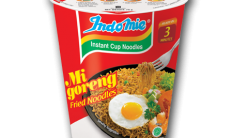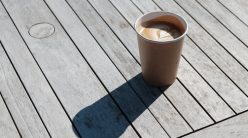Greenville News, SC
The textile industry is encouraged by a provision in the economic stimulus package that it says should at least protect many South Carolina jobs and possibly create some.
Advertisement
An amendment to the package requires that fabric for uniforms for the U.S. Coast Guard and the Transportation Security Administration, which monitors airports and other transportation systems, be made in U.S. plants and that the uniforms, including body armor and holsters, be assembled here as well.
Currently, the fabric for TSA uniforms is made in the United States but the pants and shirts are assembled in Honduras and Mexico.
About 50,000 TSA workers receive $150 a year to replace uniform pieces, according to Christopher White, TSA spokesman.
Another part of the legislation requires that fabrics used in highway and mass transit construction be made in the United States.
Although it might not be obvious, “there are a lot of textile products that go into highway and mass transit construction projects,” said Lloyd Wood, spokesman for the American Manufacturing Trade Association.
He said fabric sleeves used to hold fiber optic cables and various materials are used on construction sites.
No one is yet estimating how many jobs will be created or saved or how much revenue will flow into Upstate textile operations because of the “Buy American” provisions.
But Wood said that for every $1 million spent on textile products, 50 jobs are created, saved or stabilized.
There are currently about 25,300 workers employed in South Carolina textile operations, according to the U.S. Bureau of Labor Statistics.
That number is almost half (47,000) of the textile workers employed in the state four years ago.
“It’s a big deal. It all adds up. People will be rehired or working more hours or they won’t be laid off,” Wood said.
“This is a win for U.S. manufacturing,” said Richard Dillard, spokesman for Spartanburg-based Milliken and Co.
Norman Chapman, president of Inman Mills, said, “It only makes sense if you’re trying to stimulate the economy that you spend the money here. To outsource stimulus is insane.”
Wood agreed.
“If we’re going to spend U.S. taxpayer dollars, we might as well spend them here and keep people at work,” he said.
Selecting manufacturing as a stimulus booster makes sense, the three said.
“Stimulating manufacturing is the fastest way to put people back to work,” Chapman said.
That’s because a manufacturing has a multiplier effect — any job created there requires jobs at suppliers and in other sectors to support it, Dillard said.
“Every job you save or create is income for a person to buy products,” he said, and that’s the basis of the U.S. economy.
Wood said the industry would have no difficulty with increased business.
“We have the capacity,” he said, adding that the current textile and apparel work force nationwide is 450,000 strong. “The companies that have survived the onslaught of foreign competition are the best in the world.”
They’ve had to provide the best product, the most innovation or the fastest time-to-market to be able to survive. Wood said.
“If they couldn’t handle the flood of subsidized goods from China and Korea, they’re not here,” he said.





